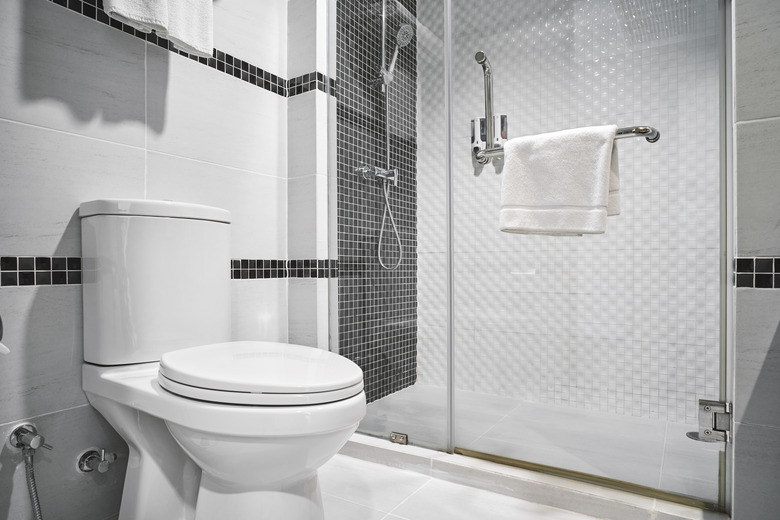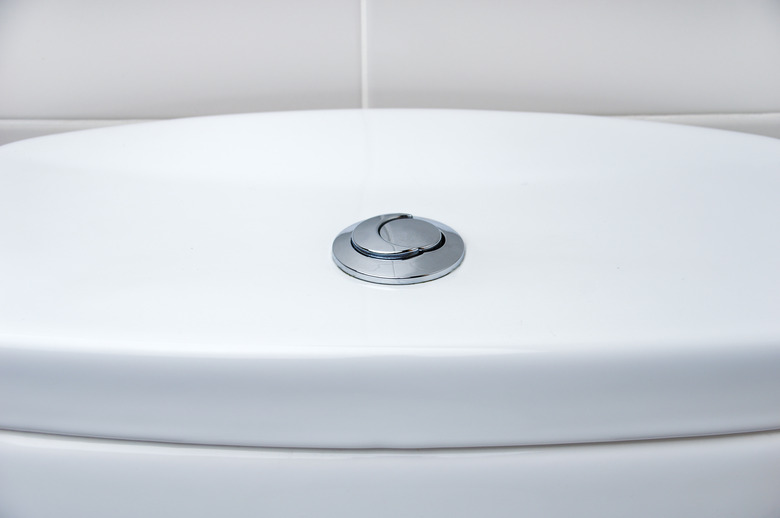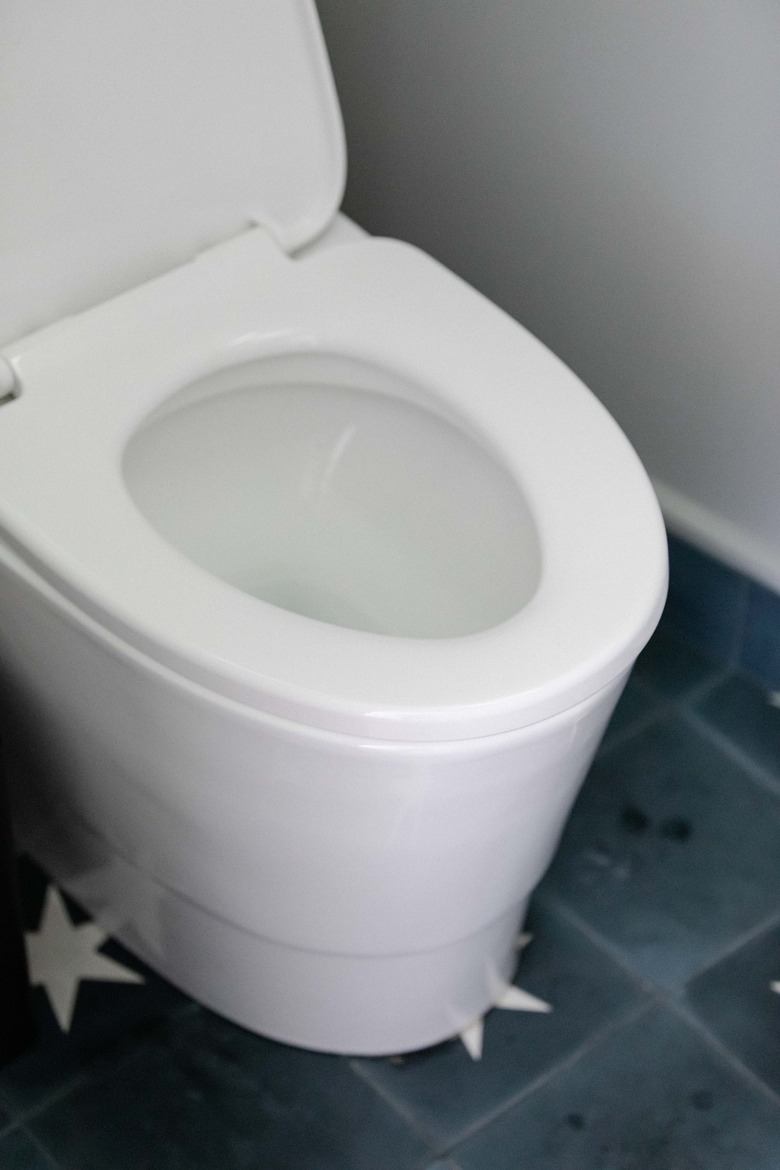How To Choose The Right Type Of Toilet
There are many types of toilets available, and choosing the right one not only contributes to the design of the bathroom, but it can also affect your comfort and well-being. Some of the factors to consider when choosing a new toilet are its design, size, shape, water-saving features and plumbing requirements.
Different Types of Toilets
Different Types of Toilets
Perhaps one of the most popular types of toilets is the two-piece model. If you are thinking of replacing an existing toilet, it is more than likely a two-piece fixture. The bottom section contains the bowl as well as the trapway (or S-bend or S-trap because it resembles the letter "S") that connects the toilet to the floor drain. The top section holds the water storage tank. During installation, the two pieces are connected by bolts.
As the name implies, the tank and bowl are permanently connected together in one-piece toilets. The design is more streamlined than two-piece toilets, and many professional designers gravitate to them because of their stylish appearance. The design makes them easier to clean than two-piece toilets because there is no separation between the upper and lower portions. Unlike one-piece toilets, two-piece units usually come with a toilet seat.
Wall-hung toilets do not have a base. The area beneath the toilet is open, making for easy cleaning. These models require strong wall framing to support the toilet as well as a wall drain rather than a floor drain. Because of the open space, a wheelchair user can maneuver close to the toilet easier than a toilet with a standard base. They are a good choice for people who must transfer from a wheelchair or scooter to use the toilet.
Upflush toilets, sometimes called macerator toilets, look like any other toilet. Rather than discharging the waste into a floor drain, the upflush sends it to a macerator that turns the waste into a slurry. The slurry is then pumped through PVC piping into the main drain line. This arrangement eliminates the need to drill through a basement floor or a slab on grade to install a drain for a new toilet.
Elongated vs. Round Toilet Bowls
Elongated vs. Round Toilet Bowls
Toilets are not only available in different configurations; there are different toilet bowl shapes available. Choosing the right shape of bowl can affect your comfort when using the toilet, and the shape will determine how much space the toilet takes up in the bathroom.
Although each manufacturer builds to its own set of dimensions, toilets with elongated bowls that are roughly oval in shape extend about 29 to 31 inches from the wall. This is the larger of the two types, and many people find it more comfortable than toilets with round bowls.
Toilets with round bowls are generally a few inches smaller than elongated models. They extend about 28 inches from the wall. That few inches can make a big difference in a small bathroom, so many people choose round bowls when space is tight.
Toilet seats are designed for either elongated or round bowls. One type of seat usually won't fit the other type of bowl shape.
Standard-Height or Comfort-Height Toilet?
Standard-Height or Comfort-Height Toilet?
Standard-height toilets are about 14 to 15 inches high from the floor to the top of the toilet bowl. Typical toilet seats add about 1 inch of height. Most people are comfortable using this type of toilet.
Someone with a bad back or bad knees or someone who uses a wheelchair to get around may find the standard height uncomfortable. For those individuals, chair-height, or comfort-height, toilets are available. These units are about 17 or 18 inches high. The extra height makes it easier for some people to sit down and stand up.
Many but not all comfort-height toilets are listed as ADA compliant, meaning they meet the requirements of the Americans With Disabilities Act. ADA requirements state that the toilet should be 17 to 19 inches high when the seat is attached.
There are products available that can extend the height of a standard toilet. They are made of molded plastic and fit over the toilet bowl. The added height along with built-in side handles make the toilet more comfortable for some people.
What Is a Corner Toilet?
What Is a Corner Toilet?
There are other types of toilets designed for specific situations. The tank of a corner toilet is shaped like a triangle so that it fits neatly into a corner. There is only a little over 1 inch of space between the walls and the tank, while standard toilets are installed 3 to 4 inches from the wall. This can free up a fair amount of floor space in a bathroom. The design makes use of what could be an underused corner while leaving straight wall space for some other use.
In bathrooms where space is tight, the corner location helps with meeting other design requirements. The National Kitchen and Bath Association recommends a clear space of at least 21 inches, but 30 inches is recommended in front of a toilet. Someone who uses a wheelchair requires a clear space of about 60 inches in diameter in order to turn easily. The effective use of a corner toilet can help meet those requirements.
Gravity-Flush and Pressure-Assisted Toilets
Gravity-Flush and Pressure-Assisted Toilets
All drains require a trap that always holds water to block sewer gas from coming into the home. Unlike the vanity or kitchen sinks where the traps are visible, toilets have built-in traps called the S-bend or S-trap. When the toilet is not in use, the trap holds enough water to block sewer gas and to keep a small amount of water in the toilet bowl.
Most toilets rely on gravity to clear the bowl when the toilet is flushed. As water rushes into the bowl from the storage tank, the force of the water pushes the standing water over the horizontal bend of the trap. This creates a siphon or sucking action that pulls the contents of the bowl into the main drain. As the bowl empties, the tank automatically begins refilling with water.
Pressure-assisted toilets use air pressure and gravity to clear the bowl. The storage tank contains a tank within a tank. As the inner tank, or bladder, fills with water, air is compressed within the bladder. When the toilet is flushed, the increased pressure drives the flushing mechanism, propelling the water into the bowl. This system is used mostly in public restrooms, but it is available for residences. The drawbacks include the loud flushing noise and the difficulty in making repairs.
Dual-Flush Toilets
Dual-Flush Toilets
A number of design changes have contributed to reducing the amount of water that toilets use. Some involve reconfiguring the bowl, and others are centered on what happens once the toilet is flushed. Dual-flush toilets differ from standard toilets because they offer two flushing options rather than emptying the entire contents of the toilet tank every time the toilet is flushed.
One option is designed to remove liquid waste and requires only a small amount of water to be effective, usually in the 0.8-gallon range. For solid waste, the full tank capacity is used to flush the toilet. These toilets also have larger than normal trapways, and they rely on pushing the waste into the trapway rather than the siphoning action of a standard toilet.
The flushing mechanism is controlled either by buttons on the top of the tank or a special lever on the side of the tank. Dual-flush toilets are relatively new, but all of the major manufacturers produce them, such as Kohler, Toto and American Standard. There are also conversion kits available that can turn a standard-flush toilet into a dual-flush model.
Water-Saving Toilets
Water-Saving Toilets
Toilets can account for about 30 percent of the water a home uses. That makes sense because it wasn't too long ago when the average toilet used 3 to 6 gallons of water for every flush. Many of those toilets are still in use. Fortunately, newer toilets are much more efficient and are capped at using 1.6 gallons per flush.
Design changes can make toilets even more efficient. Some changes involve re-engineering the bowl to improve the swirl pattern of the water. Also, new flushing systems, such as dual-flush toilets, improve a toilet's water-saving capability.
The Environmental Protection Agency's WaterSense program limits toilet water use to 1.28 gallons or less per flush. That is a 20 percent savings over standard toilets. WaterSense toilets are certified by a third party. They must meet standards that prove they work as well as other toilets in addition to saving water.
Special Toilet Features
Special Toilet Features
All toilets have a trapway. On some models, the outline of the trapway is visible on the exterior of the toilet. On a toilet with a concealed trapway, the sides of the toilet are smooth, with no visible outline of the trapway. On both of these models, the nuts and bolts that attach the toilet to the floor are visible, although they are usually covered by a plastic cap.
On a skirted toilet, the sides of the toilet are smooth from the tank to the floor. The skirt provides a streamlined look and hides the nuts and bolts that hold the toilet in place. Choosing one style over another is a matter of personal taste. Skirted and concealed trapways lack the angles of a visible trapway and tend to be easier to keep clean.
One relatively new technology is the flapperless flush. Most toilets contain a rubber flapper that covers the fill hole in the toilet tank. When the toilet is flushed, the flapper opens to allow water into the toilet bowl. It closes at the end of the flush. They can wear out and cause the toilet to leak or to keep running if they do not close properly.
Flapperless flush systems eliminate the flapper entirely. These toilets have a bucket or trough inside the tank. The trough fills with water. When the toilet is flushed, it overturns, sending a cascade of water into the bowl to continue the flushing process. It is a simple system, but for now, flapperless toilets are not as popular as conventional types.
Most toilets have handles for flushing, but touchless-flush models are available. By waving your hand near a sensor that can be mounted on top of the tank or on the side of the tank, the toilet will flush.
Another innovation is the development of a super-slick coating that is spray-applied to the inside of the toilet bowl. It's called spotLess, and it is designed to keep waste from sticking to the sides of the bowl. The coating is designed for ceramic and glass surfaces, so it can be used on toilets, sinks and car windshields. A maintenance spray applied periodically refreshes the coating.
Replacing a Toilet
Replacing a Toilet
Replacing an existing toilet is a possible DIY project, but it does involve making connections that require bending and twisting. For some people, toilets are on the heavy side, and for most everyone, they are awkward to lift and move around easily. Installing a new toilet where one did not exist before requires a professional, licensed plumber.
If you do take on the job yourself, follow the manufacturer's instructions for installation. There are a number of online sources that can help with the installation, such as Fine Homebuilding's article on how to replace a toilet. There are a few other tips to keep in mind.
One is that the toilet you buy probably won't include all of the parts you will need for installation. You'll need a supply line that runs from the water source to the toilet tank. They are available in different lengths with the connections attached. You attach the supply line to the shutoff valve with compression fittings that you tighten with a wrench. Some supply line to toilet tank connections are hand-tightened.
You'll also need a wax ring that seals the connection between the bottom of the toilet trapway and the top of the floor drain. You will need bolts called closet bolts that hold the toilet in place. You may also need a toilet seat.
Toilet Add-Ons
Toilet Add-Ons
A bidet provides a spray of water to clean up after using the toilet, although the classic bidet fixture has never caught on in the United States. One reason may be that many bathrooms are too small to accommodate another toilet-size fixture. Also, unlike toilets, bidets do not have built-in traps, so in addition to a drain, a below-floor or in-the-wall trap must be added. Bidets usually require both hot and cold water lines.
The device favored by much of the rest of the world is starting to catch on in the U.S. in the form of bidet add-ons. These devices either work with an existing toilet seat or they are the actual seat. They tap into the supply line to provide the water for the spray. The intensity and angle of the spray is controlled by easy-to-reach controls or a remote.



